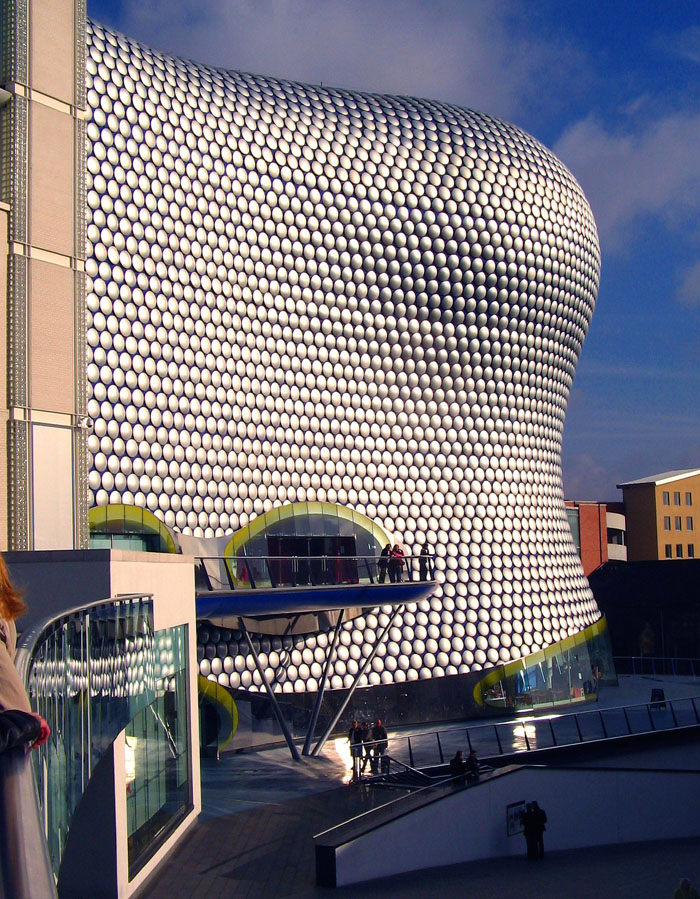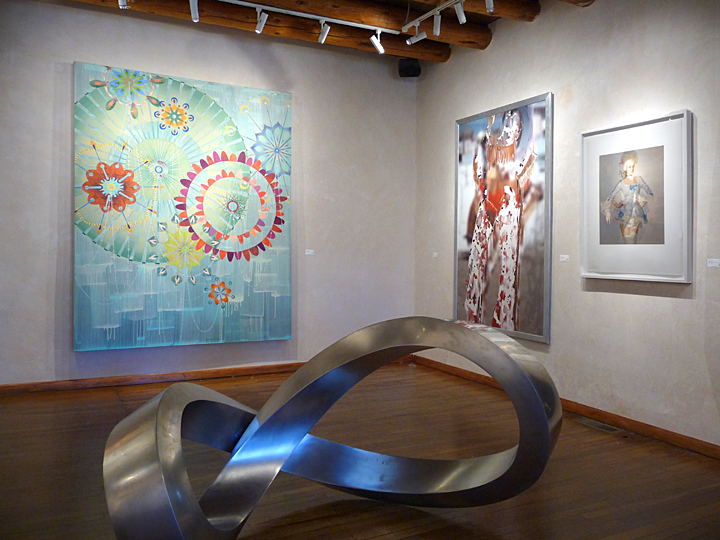|
Blobject
A blobject is a design product, often a brightly-coloured household object which has smooth curves and no sharp edges. The word is a portmanteau of "blob" and "object". Blobjects can be made of any material in any size or scale for the home, office, car, or outdoors. Common materials used in fabricating blobjects are plastic (especially polycarbonate, polypropylene, or polyethylene), metal, and rubber, with the aim being to give a more organic and animate feel. Etymology The origin of the term is disputed, but it is often attributed to either the designer-author Steven Skov Holt or the designer Karim Rashid. Holt has defined a blobject as a colorful, mass-produced, plastic-based, emotionally-engaging consumer product with a curvilinear, flowing shape. This fluid and curvaceous form is the blobject's most distinctive feature. Rashid, the contemporary designer who wrote the book ''I Want to Change the World'', was an early leader in creating blobjects and has become one of t ... [...More Info...] [...Related Items...] OR: [Wikipedia] [Google] [Baidu] |
Steven Skov Holt
Steven Skov Holt (September 24, 1957– August 13, 2015) was an American design writer, curator, educator and industrial designer.Rafkin, Louise"Lives of beauty, grace and shadows: Mara Holt Skov and Steven Skov Holt,"''San Francisco Chronicle'', November 30, 2008. Retrieved April 24, 2023.Gross, Jamie. "Smooth Operators," ''Surface'', April 2005, p. 94.Yee, Roger. "Kissed by a Frog," ''Contract Design'', June 1996, p. 36–9. He is known for an interdisciplinary practice that posited the ascension of design as the most significant late-20th- and 21st-century form of public art, and more specifically, elaborated its shift toward forms that were more fluid, biomorphic, hybridized, emotional and culturally literate.Muschamp, Herbert''The New York Times'', March 10, 2000. Retrieved April 24, 2023.Patton, Phil"Liquid Solids,"''Esquire'', March 2000, p. 70. Retrieved April 24, 2023.Lamb, Gregory M. "The 'blobject' comes of age," ''The Christian Science Monitor'', June 17, 2005.Klausner, ... [...More Info...] [...Related Items...] OR: [Wikipedia] [Google] [Baidu] |
Blobitecture
Blobitecture (from blob architecture), blobism and blobismus are terms for a movement in architecture in which buildings have an organic, amoeba-shaped, building form. Though the term ''blob architecture'' was in vogue already in the mid-1990s, the word ''blobitecture'' first appeared in print in 2002, in William Safire's "On Language" column in the ''New York Times Magazine'' in an article entitled "Defenestration". Though intended in the article to have a derogatory meaning, the word stuck and is often used to describe buildings with curved and rounded shapes. Origins of the term "blob architecture" The term "blob" was used by the Czech-British architect Jan Kaplický for the first time for the "Blob Office Building" in London in 1986. The building was characterized by organic, aerodynamic shape and advanced technological and energy-saving solutions. The term 'blob architecture' was coined by architect Greg Lynn in 1995 in his experiments in digital design with metaball graphica ... [...More Info...] [...Related Items...] OR: [Wikipedia] [Google] [Baidu] |
Marc Newson
Marc Andrew Newson CBE RDI (born 20 October 1963) is an industrial designer who works in aircraft cabin design, product design, furniture design, jewellery, and clothing. His style uses smooth geometric lines, translucency, strength, transparency, and tends to have an absence of sharp edges. Career Newson was born in Sydney, Australia, and in 1984 he graduated at the Sydney College of the Arts in Sydney, Australia studying jewellery and sculpture. In 1986 he was awarded a grant from the Australian Crafts Council and staged a first exhibition featuring the Lockheed Lounge. The following year he moved to Tokyo, where he mostly worked with the designer company Idée and where he created works such as the Super Guppy lamp (1987) and the Orgone lounge (1989). He moved to Paris in 1991 where he set up a studio. He describes his 1988 Embryo Chair as "one of the first pieces where I hit upon a discernible style". He co-founded the Ikepod watch company in 1994, leaving the c ... [...More Info...] [...Related Items...] OR: [Wikipedia] [Google] [Baidu] |
Transparency And Translucency
In the field of optics, transparency (also called pellucidity or diaphaneity) is the physical property of allowing light to pass through the material without appreciable light scattering by particles, scattering of light. On a macroscopic scale (one in which the dimensions are much larger than the wavelengths of the photons in question), the photons can be said to follow Snell's law. Translucency (also called translucence or translucidity) allows light to pass through, but does not necessarily (again, on the macroscopic scale) follow Snell's law; the photons can be scattered at either of the two interfaces, or internally, where there is a change in index of refraction. In other words, a translucent material is made up of components with different indices of refraction. A transparent material is made up of components with a uniform index of refraction. Transparent materials appear clear, with the overall appearance of one color, or any combination leading up to a brilliant spectrum ... [...More Info...] [...Related Items...] OR: [Wikipedia] [Google] [Baidu] |
Injection Molding
Injection moulding (U.S. spelling: injection molding) is a manufacturing process for producing parts by injecting molten material into a mould, or mold. Injection moulding can be performed with a host of materials mainly including metals (for which the process is called die-casting), glasses, elastomers, confections, and most commonly thermoplastic and thermosetting polymers. Material for the part is fed into a heated barrel, mixed (using a helical screw), and injected into a mould cavity, where it cools and hardens to the configuration of the cavity. After a product is designed, usually by an industrial designer or an engineer, moulds are made by a mould-maker (or toolmaker) from metal, usually either steel or aluminium, and precision-machined to form the features of the desired part. Injection moulding is widely used for manufacturing a variety of parts, from the smallest components to entire body panels of cars. Advances in 3D printing technology, using photopolyme ... [...More Info...] [...Related Items...] OR: [Wikipedia] [Google] [Baidu] |
Rapid Prototyping
Rapid prototyping is a group of techniques used to quickly fabricate a scale model of a physical part or assembly using three-dimensional computer aided design (CAD) data. Construction of the part or assembly is usually done using 3D printing or " additive layer manufacturing" technology. The first methods for rapid prototyping became available in the mid 1987 and were used to produce models and prototype parts. Today, they are used for a wide range of applications and are used to manufacture production-quality parts in relatively small numbers if desired without the typical unfavorable short-run economics. This economy has encouraged online service bureaus. Historical surveys of RP technology start with discussions of simulacra production techniques used by 19th-century sculptors. Some modern sculptors use the progeny technology to produce exhibitions and various objects. The ability to reproduce designs from a dataset has given rise to issues of rights, as it is now possib ... [...More Info...] [...Related Items...] OR: [Wikipedia] [Google] [Baidu] |
Information Visualization
Information is an abstract concept that refers to that which has the power to inform. At the most fundamental level information pertains to the interpretation of that which may be sensed. Any natural process that is not completely random, and any observable pattern in any medium can be said to convey some amount of information. Whereas digital signals and other data use discrete signs to convey information, other phenomena and artifacts such as analog signals, poems, pictures, music or other sounds, and currents convey information in a more continuous form. Information is not knowledge itself, but the meaning that may be derived from a representation through interpretation. Information is often processed iteratively: Data available at one step are processed into information to be interpreted and processed at the next step. For example, in written text each symbol or letter conveys information relevant to the word it is part of, each word conveys information releva ... [...More Info...] [...Related Items...] OR: [Wikipedia] [Google] [Baidu] |
Computer-aided Design
Computer-aided design (CAD) is the use of computers (or ) to aid in the creation, modification, analysis, or optimization of a design. This software is used to increase the productivity of the designer, improve the quality of design, improve communications through documentation, and to create a database for manufacturing. Designs made through CAD software are helpful in protecting products and inventions when used in patent applications. CAD output is often in the form of electronic files for print, machining, or other manufacturing operations. The terms computer-aided drafting (CAD) and computer aided design and drafting (CADD) are also used. Its use in designing electronic systems is known as '' electronic design automation'' (''EDA''). In mechanical design it is known as ''mechanical design automation'' (''MDA''), which includes the process of creating a technical drawing with the use of computer software. CAD software for mechanical design uses either vector-based graphic ... [...More Info...] [...Related Items...] OR: [Wikipedia] [Google] [Baidu] |
Ken Price (artist)
Kenneth Price (February 16, 1935February 24, 2012) was an American artist who predominantly created ceramic sculpture. He studied at the Chouinard Art Institute and Otis Art Institute (now Otis College of Art and Design) in Los Angeles, before receiving his BFA degree from the University of Southern California in 1956. He continued his studies at Chouinard Art Institute in 1957 and received an MFA degree from New York State College of Ceramics at Alfred University in 1959. Kenneth Price studied ceramics with Peter Voulkos at Otis and was awarded a Tamarind Fellowship. He is best known for his abstract shapes constructed from fired clay. Typically, they are not glazed, but intricately painted with multiple layers of bright acrylic paint and then sanded down to reveal the colors beneath. Ken Price lived and worked in Venice, California and Taos, New Mexico. Biography Early life Price was born February 16, 1935, and raised in West Hollywood, Los Angeles, California. in 1937 w ... [...More Info...] [...Related Items...] OR: [Wikipedia] [Google] [Baidu] |
Rex Ray
Rex Ray (September 11, 1956 – February 9, 2015) was an American graphic designer and collage artist, based in San Francisco. Biography Born as Michael Patterson on September 11, 1956, on a United States Army base in Germany, and he was raised in Colorado Springs, Colorado, Colorado Springs, Colorado. He moved to San Francisco in 1981, to attend San Francisco Art Institute (SFAI) where he graduated. Early in his career he worked as a digital graphic designer for nightclubs and for music shows. He designed and performed with The Residents, as well as designed for David Bowie, among others. He changed his name to Rex Ray in order to start anew and be free of his past. By the early 1990s he started a professional fine art practice. Ray had been one of the first artists to use MacOS, Mac computer-based technology to create his art. He had two units in the Allied Box Factory in the Mission District, San Francisco, Mission District in San Francisco, one was his living space and the ... [...More Info...] [...Related Items...] OR: [Wikipedia] [Google] [Baidu] |






